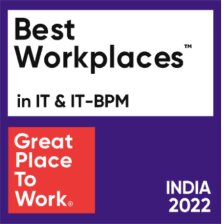Patient Data Analytics: Enhancing Healthcare Outcomes Through Insight-Driven Decisions
In the todays healthcare environment, the integration of patient data analytics is turning out to be a game changer. Advanced technologies and the colossal amounts of data being generated allow healthcare providers to arrive at well-informed decisions, that will ultimately boost patient outcomes. Data analytics in healthcare also aim at improving in a great way patient experience in healthcare settings. This blog focuses on how patient data analytics is changing the landscape of the healthcare industry, emphasizing real-time monitoring, predictive analytics, and data-driven patient care in the future.
The Power of Patient Data in Modern Healthcare
The healthcare sector, whose core services involve preventive care, diagnosis, treatment, and ongoing management of chronic conditions, leverages patients’ data, being conducive to this service platform, which comprises electronic health records, lab results, wearable device data, etc.
- Historical Data: Includes patient histories, previous diagnoses, and past treatments.
- Real-Time Data: Captures current patient metrics such as vital signs and activity levels.
- Predictive Data: Uses historical trends to forecast future health events and risks.
Data analytics in healthcare industry enables the healthcare provider to improve their patient experience by harnessing data combined with past experiences to be able to obtain precise patient health information, enabling them to be able to provide better individualized care.
Transforming Healthcare Outcomes Through Data-Driven Insights
The integration of advanced analytics into patient care is driving significant improvements in healthcare outcomes. Here’s how data-driven insights are making a difference:
- Predicting Hospital Readmissions: By analyzing patient demographics, medical history, and behavioral data, predictive models identify patients at high risk for readmission. This enables targeted interventions and personalized follow-up care, reducing readmission rates and associated costs.
- Enhancing Chronic Disease Management: Integrating data from wearables, EHRs, and lab results allows for personalized treatment plans tailored to individual patients’ needs. This approach improves disease management and reduces complications.
- Real-Time Monitoring for Heart Failure: Wearable devices track vital signs and activity levels, with data analyzed in real-time to adjust treatment plans proactively. This reduces emergency room visits and improves patient management.
- Preventing Sepsis with Early Warning Systems: Predictive models analyze patient data to detect early signs of sepsis, allowing for timely interventions and reducing mortality rates.
Overcoming Challenges and Embracing the Future of Data Analytics in Healthcare
- Data Quality and Integration: Ensuring high-quality, consistent data from various sources is essential. Power BI’s data cleaning and transformation features help standardize and integrate information, providing a unified dataset for analysis.
- Privacy and Security: Managing sensitive patient data while adhering to privacy regulations is crucial. In addition to, Power BI offers features such as row-level security and data encryption to protect patient data and ensure compliance. In addition to these, other advanced features bolster data privacy
- Complexity of Data: The multidimensional nature of patient data can be overwhelming. Power BI’s advanced visualization capabilities simplify complex datasets, enabling users to explore and interpret data more effectively.
Future Trends of Data Analysis in Healthcare
- Enhanced Real-Time Analytics: Real-time data processing will become more prevalent, enabling swift responses to patient conditions. Power BI’s real-time data streaming and live data connections facilitate immediate analysis.
- Personalized Patient Insights: Future advancements will focus on delivering highly personalized insights. Power BI’s clustering and segmentation tools help tailor treatment plans to individual patient profiles.
- Advanced Data Visualization: Sophisticated visualization tools will be essential for interpreting complex data. Power BI offers custom visuals, heat maps, and geographic mapping to present data clearly and impactfully.
- Data Democratization: Broadening access to data within healthcare organizations will improve decision-making. Power BI’s intuitive interface and sharing capabilities make data accessible to more stakeholders.
How InsightOptima Can Help
At InsightOptima, we are dedicated to transforming healthcare through innovative data analytics solutions. Here’s how we can assist:
- Tailored Analytics Solutions: Our team specializes in designing custom analytics solutions that integrate seamlessly with your existing systems, ensuring that you get actionable insights from your patient data.
- Power BI Expertise: With extensive experience in Power BI, we help healthcare organizations implement advanced data visualization, real-time analytics, and predictive modeling to enhance patient care and operational efficiency.
- Data Integration and Transformation: We offer services to clean, integrate, and transform data from multiple sources, providing you with a unified view that supports better decision-making and improved patient outcomes.
- Compliance and Security: We ensure that your data analytics practices comply with privacy regulations and security standards, protecting sensitive patient information while maximizing the value of your data.
- Workshops and Training: Join our 1-Hour Free Workshop with Our BI Expert to learn how to leverage Power BI effectively for patient data analytics. Our workshops are designed to empower your team with the knowledge and skills needed to harness the full potential of your data.
For organizations looking for advanced solutions, consider partnering with data analytics consulting services to maximize the impact of patient data analytics.
Conclusion
Patient data analytics is a transformative force in the healthcare industry, offering the potential for more accurate diagnoses, personalized treatments, and improved patient outcomes. By overcoming current challenges and embracing future advancements, healthcare providers can leverage data to enhance care and operational efficiency. Power BI’s advanced features play a crucial role in this transformation, providing tools for data integration, real-time analysis, and personalized insights.
Exclusive Offer: Discover how patient data analytics can revolutionize your healthcare practice! Join our 1-Hour Free Workshop with Our BI Expert and learn how to leverage Power BI for advanced patient data analysis.
Thank you for reading InsightOptima’s latest blog. For more insights and updates on how data analytics is reshaping industries, stay tuned to InsightOptima.
To know more, Click here
Author: Varun Gupta (Data & BI Expert)









